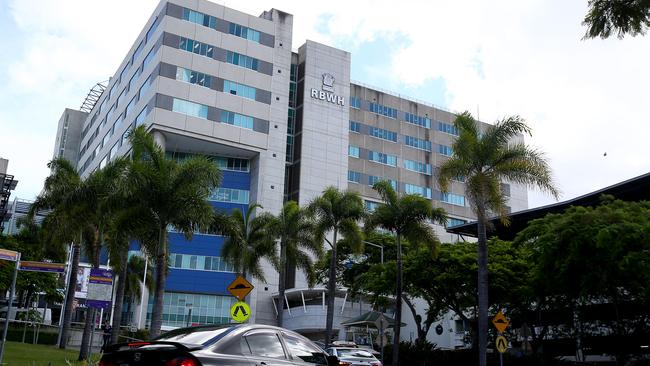‘Acute shortage’: RBWH upgraded to tier three, issues alert to staff
Brisbane’s major hospital issued an alert to encourage staff to discharge patients after an “acute shortage of bed capacity”.
QLD News
Don't miss out on the headlines from QLD News. Followed categories will be added to My News.
Staff at Brisbane’s major hospital were encouraged to discharge patients on Tuesday morning to free up space due to an “acute shortage of bed capacity”.
The Royal Brisbane and Women’s Hospital was upgraded to tier three shortly before 9am during a period of high demand.
“We ask all staff to focus on clinical priorities and facilitate discharges where appropriate,” the hospital wrote to staff in an email seen by The Courier-Mail.
“Please ensure that community services and alternative care options such as HITH (hospital in the home) and Virtual Ward are considered and optimised.
“Escalate any discharge delays to Patient Flow Services.”
A Metro North Hospital and Health Service spokeswoman said the alert was downgraded later on Tuesday and the facility was operating at tier two of its capacity plan by the afternoon.
“The acute bed capacity plan outlines clear triggers and actions when a hospital, or several hospitals, experience higher than usual demand,” she said.

“Metro North’s PACH (patient access co-ordination hub) assists in managing demand by identifying and alerting potential bottlenecks or delays in treatment so appropriate action can be taken.”
The spokeswoman said no other Metro North Health facility was currently on tier two.
“All Metro North Health hospitals have been and are accepting ambulances, with no impact to patient care even when a tier three is activated or has been activated recently,” she said.
The Australian Medical Association Queensland’s (AMAQ) president, Maria Boulton, said the chronic shortage of beds in the state’s hospitals clogs up emergency departments and leaves facilities vulnerable during high demand.
“The trouble is this puts pressure on the emergency department because then emergency department patients that need a bed in the hospital wards have to wait for longer in the emergency department until a bed becomes available,” she said.
“Then you have people on stretches in the hallways and you can have people ramped in the ambulance.
“It does clog up the whole system.”





